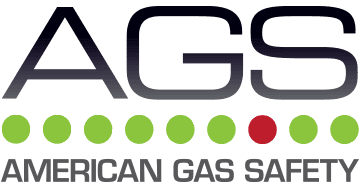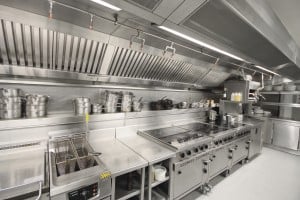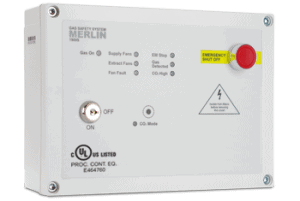The commercial kitchen is a hazardous area that should be monitored for both toxic and combustible gas hazards. Whether natural gas or propane is used for combustion, a variety of cooking equipment (e.g. stoves, grills and fryers) present a constant flammable danger to workers. In addition, carbon monoxide (CO), the byproduct of incomplete combustion, can be present at unsafe levels. Over the last twenty years, standards for CO monitoring have been developed, with first-alarm levels typically set at 25-35 parts per million.
Today more rigorous standards for gas monitoring are being developed; those driving regulatory change vary by state but include many: building inspectors, consulting engineers, insurance adjustors, fire marshals, and life safety experts. More legislation is inevitable in light of the sobering statistic that 25% of all fatalities in commercial buildings are due to carbon monoxide poisoning. What’s problematic is, CO is odorless, so rising CO levels are difficult to detect by humans. According to medical research, just 0.1% CO in the atmosphere can adversely affect concentration. At 2% CO levels, breathing reduces to about 50% of the normal rate. Once levels rise to 5-10% people quickly become confused and can lapse into unconsciousness. The commercial kitchen presents a special case for more rigorous CO monitoring, as there is a greater risk of CO poisoning from both long-term, low level exposure as well as short-term, high-level exposure of CO concentration levels.
Under the NFPA (54) Code 10.3.5.1 & 10.3.5.2 (2002), ventilating hoods and exhaust systems shall be permitted to vent gas-fired equipment installed in commercial applications. However, certain requirements must be met, including:
• These same requirements apply for systems with standing or electronic pilot ignitions.
• A valve shall be located on the main gas line feeding the appliances served by the gas hood and shall stop the flow of gas to the appliances upon loss of draft. No by-pass of the gas solenoid valve is allowed.
Where automatically operated gas utilization equipment is vented through a ventilating hood or exhaust system equipped with a damper or with a power means of exhaust, provisions shall be made to allow the flow of gas to the main burners only when the damper is open to a position to properly vent the equipment and when the power means of exhaust is in operation:
• The gas valve must be controlled by a draft proving switch measuring draft within the hood. The gas valve is allowed to be open only when the fan is operational or the damper is 100% open.
• The gas valve shall be equipped with a manual reset (integral or otherwise). The valve must be manually reset only when the lock-out condition is corrected. The reset cannot be automatic. Under current kitchen management practices, there are at least three ways to satisfy these requirements:
Option 1: Fan Proving System with Internal Manual Reset Valve
Option 2: Fan Proving System with External Manual Reset
Option 3: Most Advanced Design – Gas Monitoring System with External Auto Reset Valve
Our latest range of Gas Ventilation Interlocking systems, Merlin 1500S & Merlin 2000S would fall under option 3 as they are the most advanced design of Gas Interlocks on the Market.
For more information regarding the Merlin 2000S & 1500S control panels please call our sales team on (727)-608-4375 or visit the website at www.americangassafety.com


